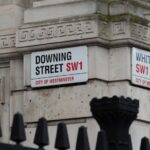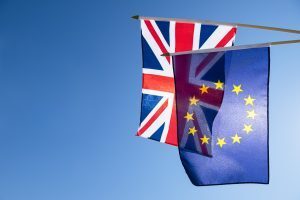With general elections announced in the UK as well as France and the USA, a period of stable exchange rates has come crashing to a stop. What does it all mean for the exchange rate you can expect after Britain’s general election? As Smart Currency marks our 20th year, we sift the data over that period.
The touchpaper is lit and the battle lines are drawn. On Thursday 4 July, the United Kingdom will go to the polling stations.
The opinion polls are all pointing to a sizeable Labour victory but the result is far from settled. A week is a long time in politics and we have another three weeks of campaigning to go. Most experts expect the polls to narrow, and with a Labour victory potentially priced into the value of sterling already there is everything to lose from a hung parliament – a .
So, far from delighting in weeks of robust political debate, those of us with large currency transactions to make will be looking at the date with apprehension. Elections present a great deal of uncertainty, which can easily spill over into markets and cause frenetic moves to currencies.
The stakes are doubly high when your hard-earned savings are at stake. Whether it’s buying a house, making an investment, or moving abroad, elections are significant and unpredictable events that leave your budget squarely in the firing line.
Looking back at previous elections helps underscore the importance of protecting yourself from currency risk. In this article, we’ll dive into the four most recent general elections to show their impact on the pound, before asking what that means this time around.

2010: Goodbye Brown, pound down
We’ve seen a lot of things change over our 20 years in business, including seven prime ministers. But there has only been one change in the party holding power. That came in 2010, when Gordon Brown’s Labour party lost its majority as the dust from the Global Financial Crisis (GFC) settled.
A change in government did not, however, provide a decisive victory. David Cameron’s Conservatives became the largest party but decided to enter a coalition government with the resurgent Liberal Democrats. 2010 was the year of Nick Clegg, in many ways, and his performance in the televised debates had a huge impact on the pound. ‘Cleggmania’ led many experts to predict a hung parliament (i.e. no party having won a majority) and the pound fell by 8% against the US dollar in the week before the election.
The pound fell by 8% against the US dollar in the week before the election.
Those predictions would prove accurate. The 2010 election resulted in the country’s first hung parliament since 1974. The pound stumbled, losing almost two cents to the euro and the US dollar overnight. Sterling would stabilise over subsequent weeks, but the major learning point from this election was just how much importance markets put in certainty.
Let’s take a look at how GBP/EUR fluctuated one day, one week and one year after the election:
| Time after election | GBP/EUR | GBP/USD |
| One day | – 1.2% | – 0.9% |
| One week | – 0.5% | – 1.5% |
| One year | – 3.4% | + 10.3% |
2015: A forward contract would be adviseable…
If 2010 provided the drama, 2015 was altogether more serene. A tight race gradually tilted into the favour of the Conservatives (after some questionable bacon sandwich eating by Labour’s Ed Miliband), who were able to secure a majority in parliament.
The pound benefitted from the decisive outcome, climbing by over two cents against its major rivals in 24 hours. Those gains would be extended further in the weeks and months to come.
However, 2016 brought Brexit, one of the most disruptive events sterling has ever faced. In just over a year, the pound lost more than 10% of its value against the euro and the US dollar. As it turned out, sterling has yet to recover to anything like the highs it saw in the mid-2010s.
| Time after election | GBP/EUR | GBP/USD |
| One day | + 1.9% | + 1.5% |
| One week | + 2.5% | + 3.6% |
| One year | – 6.2% | – 5.2% |
2017: Rough winds shake May, and sterling
Theresa May’s decision to call an election in 2017 would prove ill-fated. As the UK began the process of exiting the European Union, May believed that she could increase her majority in parliament and make it easier to pass any Brexit-related regulation.
How wrong she was. Jeremy Corbyn’s Labour party massively outperformed the polls, and far from strengthening her hand, May’s majority was erased and she was forced into a less than ideal alliance with parties in Northern Ireland.
2017 is another excellent example of an election destabilising the pound. May and the pollsters had expected a cakewalk, but when that vision was scuppered, it was sterling that took the fall. For people with overseas transactions, it was a time of deep uncertainty, which scuppered far too many dreams.
Don’t believe us? Take a look at the numbers below:
| Time after election | GBP/EUR | GBP/USD |
| One day | – 1.3% | – 1.5% |
| One week | – 0.8% | – 1.3% |
| One year | – 1.3% | + 3.7% |
2019: Brexit done, but Covid coming…
By 2019, the shine had very much been wiped away from Corbyn’s political prospects. Boris Johnson fought a straightforward campaign, focusing on Brexit, national security and levelling up. The result was an overwhelming majority as the Conservatives recorded their best performance in a national election since 1987.
The pound surged to begin with, as markets hoped the UK could soon put the doubt caused by Brexit behind them. Its success would, however, proved short-lived, and sterling was buffeted by a string of negative events, including the pandemic, the realities of Brexit and by the ousting of Boris Johnson in 2022.
Elections are about more than just the immediate outcome, but also the chain reactions that result. For the pound in 2019, this set it on a path of short-term strength but medium-term weakness.
Here’s how the pound moved in the subsequent timescale:
| Time after election | GBP/EUR | GBP/USD |
| One day | + 1.5% | + 1.7% |
| One week | – 0.9% | – 0.8% |
| One year | – 6.1% | + 0.7% |
What should we make of this?
Every election is different. There is no universal truth that can be taken from one vote and applied in all circumstances, given all the unseen factors that can move a currency pair up, down or sideways.
Yet by looking back at past elections, we can see a couple of common threads emerge. Firstly, currency markets loathe uncertainty. So, while the polls might be strongly favouring Labour at this time, the fact that nobody can say for sure who will be the largest party on 5 July is a recipe for volatility.
Secondly, elections can have a very sharp impact on currencies, often causing them to move by several percentage points overnight. New governments can change a currency’s trajectory
Finally, the UK could well be on course for its first change of government in 14 years. That means your budget is not only at risk of uncertainty, but it could also very soon be subject to all the new regulations, policies and exuberant, oh-so bright ideas that new governments tend to bring.
It is our experience that elections can wreak havoc on your budget. Ignore the predictions of an easy Labour victory. Anything can happen in politics, and that’s much the same for currency markets. The election is just weeks away. The best time to manage your risk is now.
SCE: Don’t let this election spoil your upcoming transaction. Speak to the experts today to see how you can protect your budget from currency risk.





















